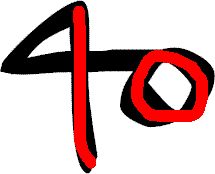I’ve just got back from Barcelona (more on that shortly), and have a brief thought on the VMs for you.
Tony Gaffney emailed a few days ago to say that he had posted up his initial thoughts on the Voynich Manuscript to the Ancient Cryptography forum’s Voynich Manuscript topic: overall, his initial code-breaker’s reaction is that everyone else seems to be overcomplicating the issue – the VMs can’t be that tricky, can it?
Alas, for all Tony’s skill and cunning, I believe that he is trying to read the covertext, much as I described here. In poker terms, the VMs is full of “tells“, tiny behavioural tics, mannerisms and rituals that give away what’s going on under the surface: to a code-breaker’s eyes, the problem here is that there are so many tells that it is hard to accept that they all might be valid at the same time, as opposed to being the quirks of (for example) an unknown language. But they are all tells!
All the same, I’ve been prompted (partly by Tony’s desire to see the VMs as a simple object) into wondering whether my own reading of “4o” (as a “subscriptio” token, indicating a word-initial contraction following the first plaintext letter) might be overcomplex. If not that, though, then what kind of thing might “4o” be?
Thinking about it over the weekend, perhaps the simplest explanation might be that it codes for “lo” [‘the’] in the (very probably Italian, & very probably heavily-abbreviated) plaintext. “lo dragone” would then be written something like “4odra[gone]” (depending on how you encipher the rest of the letters). This has the additional benefit of explaining 4o’s ciphertext shape, as the “lo” would be steganographically concealed within the shape of the “4o”, while its very presence would be concealed by running it into the subsequent word (so, “4otedy” rather than “4o tedy“).

I also suspect that the (rarely seen) free-standing “4” is an entirely different letter entirely… but that’s an issue for a different day.
PS: there isn’t a lot of literature on “4o” (“qo” in EVA), but here’s one brief paper (Sazonov 2003) to be going on with.
IMHO there are many tells in Voynich manuscript but sadly not enough for complete solution. Tony is trying to solve it in his own manner but I’m afraid this is not that way which works successfully. The scribe may to laugh on decipherers in this case because IMHO there are not mathematic (scientific) but art creation and encoding is visual (also IMHO). At last I think it may be the case of enciphered text with cipher explanation – some things are pointing at this… Remember postulation: “Science is the way to talk about simple things in complex manner, the art is the way to talk about complex things in simple manner” ( this is translation and I dont know author 🙂 )
Now that we have this idea going, we should test the “4o-” frequency against “lo” frequency in contemporary Italian and Latin texts.
Hi Christopher,
It’s a good idea, but you have to be careful about transcription issues because few contemporary manuscripts in Italian included spaces – and so any frequency comparison would be built on top of assumptions about what was (or was not) a real word. Which is not to say it’s not a good idea, just that you have to be particularly careful about transcription. 🙂
Cheers, ….Nick Pelling….
Nick: I would caution against the kind of interpretation you describe here. Whilst it could be correct, I can’t say it isn’t, it does not seem to fit the way things are done in the diplomatic cipher alphabets. Of course we know that the Voynich cipher is not like the cipher in the diplomatic examples.
In the diplomatic ciphers “4o” could normally correspond to an arbitrarily selected letter, null, double letter or single word. This would be the same with the “4P” or any other characters. Now the Voynich may give a particular interpretation of characters given their shape other than an arbitrary correspondence with a letter, but I would have a healthy amount of doubt on the matter.